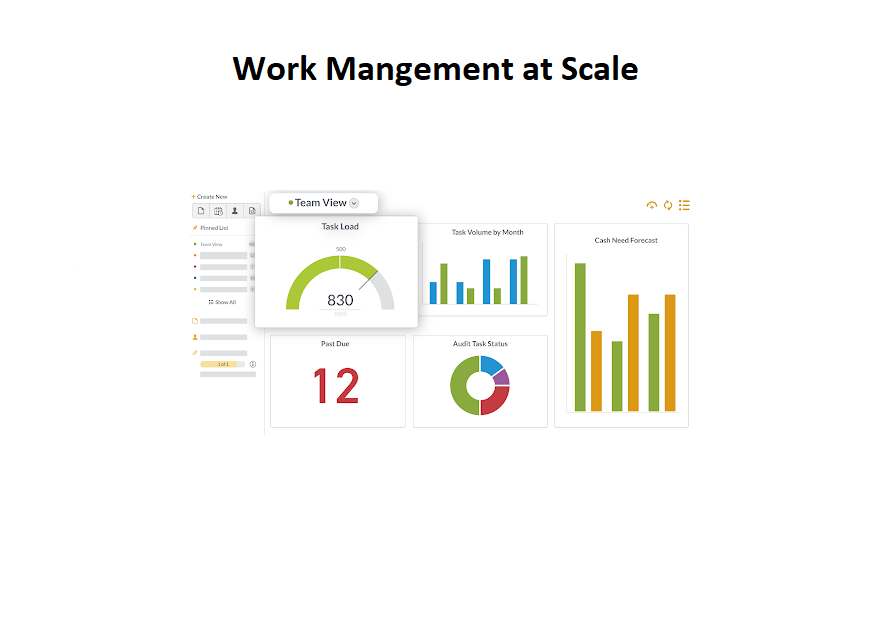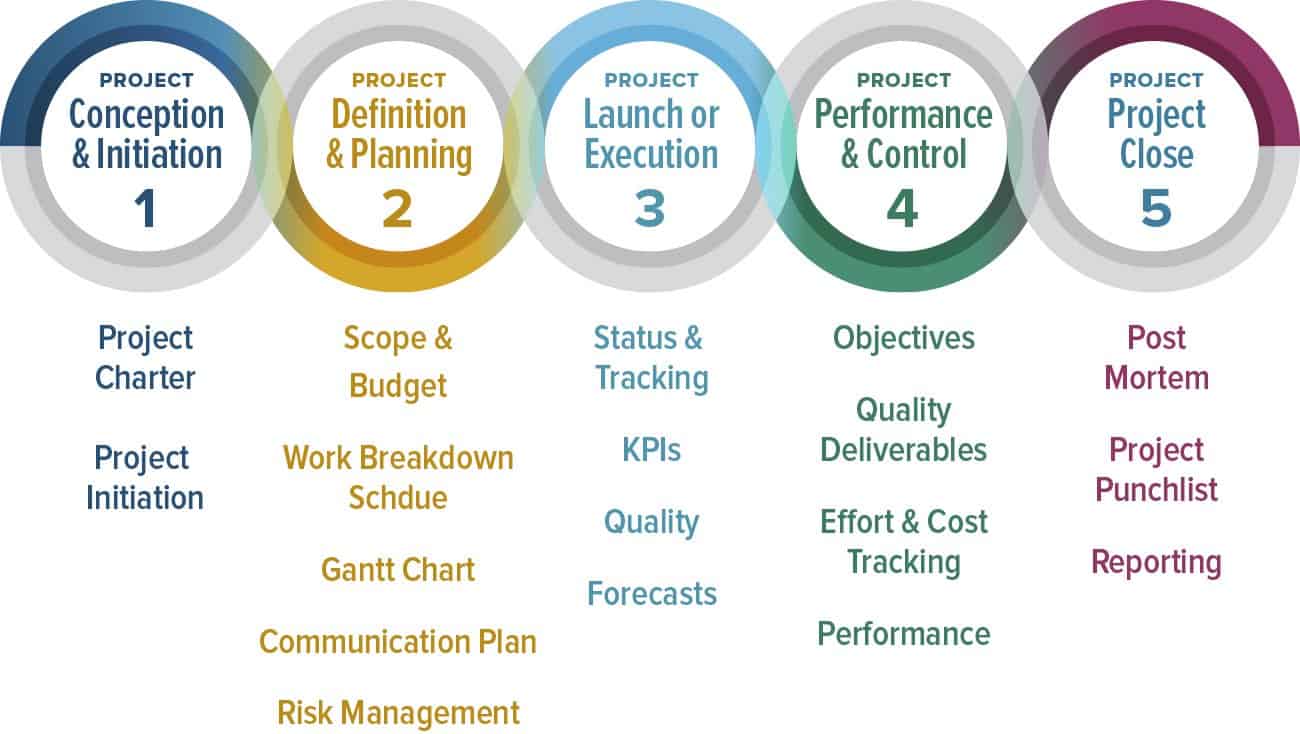
In today's fast-paced businessenvironment, organizations are constantly facing the challenge of managing an ever-increasing workload. As projects become more complex and teams expand, traditional work management methods often fall short, leading to inefficiencies, bottlenecks, and missed deadlines. To truly thrive in this dynamic landscape, businesses need to adopt a more scalable approach to work management. This is where Work Management at Scalecomes in.
Work Management at Scale is a strategic approach to managing work across multiple projects, teams, and departments. It involves utilizing a combination of processes, tools, and technologies to streamline workflows, enhance collaboration, and optimize resource allocation.
Significance Of Work Management At Scale
Work management at scale is the process of managing multiple projects, teams, and tasks effectively in a large organization. It is a strategic approach that involves utilizing a combination of processes, tools, and technologies to streamline workflows, enhance collaboration, and optimize resource allocation.
Here is an explanation of the six key areas of work management:
1. Task Management And Workflow Coordination
Task management is the process of planning, organizing, and tracking tasks to ensure that they are completed efficiently and effectively. Workflow coordination is the process of managing the flow of work between different tasks and teams to ensure that work is completed in the correct order and within the desired timeframe.
2. Work Prioritization And Escalation
Work prioritization is the process of determining which tasks are most important and should be completed first. This is often done based on factors such as the urgency of the task, the impact of the task, and the resources available to complete the task. Escalation is the process of identifying and addressing tasks that are not progressing as expected. This may involve providing additional resources to the task, reassigning the task to another team, or escalating the issue to a manager.
3. Project Management
Project management is the process of planning, organizing, and managing resources to bring about the successful completion of specific project goals and objectives. It involves a variety of tasks, including defining project goals and objectives, creating a project plan, assigning resources, tracking progress, and managing risks.
4. Information Tracking
Information tracking is the process of collecting, organizing, and storing information about work processes and tasks. This information can be used to track progress, identify trends, and make informed decisions.
5. Communication And Accessibility
Communication is the process of sharing information between different people involved in a project or task. Accessibility is the ability for everyone involved in a project or task to access the information they need to do their job.
6. Technical Specifications
Technical specifications are the detailed requirements for a product or service. They are typically written in a clear and concise style, and they should be easy for all stakeholders to understand.
Benefits Of Work Management At Scale
By implementing work management at scale, businesses can achieve a number of benefits, including:
- Increased revenue -WMaS can help businesses increase their revenue by up to 10%.
- Reduced time to market -By streamlining processes and automating tasks, work management at scale can help businesses bring products and services to market faster.
- Improved quality -By enabling real-time visibility and control, work management at scale can help businesses identify and resolve issues early on, leading to higher quality up to 10%.
- Increased customer satisfaction - By delivering projects on time and within budget, work management at scale can help businesses exceed customer expectations and improve satisfaction levels. WMaS can help businesses increase customer satisfaction by up to 15%.
- Reduced costs - By optimizing resource allocation and eliminating redundancies, work management at scale can help businesses save money. WMaS can help businesses reduce their costs by up to 5%.
- Increased employee productivity -By providing employees with the tools and resources they need to succeed, work management at scale can help businesses increase employee productivity by 20%.
Work management at scale is a critical tool for businesses of all sizes that want to improve their efficiency, productivity, and ultimately, their bottom line.
What Are The 4 Main Elements Of Work Management?
The four main elements of work management are planning, organizing, leading, and controlling.
1. Planning -is the process of defining the work that needs to be done and setting goals and objectives. This involves identifying the scope of the work, breaking it down into tasks, and creating a timeline for completion.
2. Organizing- is the process of structuring the work and assigning resources. This involves creating teams, assigning roles and responsibilities, and allocating resources such as time, money, and equipment.
3. Leading- is the process of motivating and inspiring employees to achieve the organization's goals. This involves providing direction, feedback, and support, and creating a positive and productive work environment.
4. Controlling -is the process of monitoring progress and taking corrective action as needed. This involves tracking progress against the plan, identifying and addressing problems, and making adjustments as needed.
These four elements are all essential for effective work management. Without planning, organizing, leading, and controlling, work would be chaotic and inefficient.
Here is a table that summarizes the four main elements of work management:
| Element | Description |
| Planning | Defining the work that needs to be done and setting goals and objectives. |
| Organizing | Structuring the work and assigning resources. |
| Leading | Motivating and inspiring employees to achieve the organization's goals. |
| Controlling | ControllingMonitoring progress and taking corrective action as needed. |
Business Growth By 10x Through Work Management At Scale
Achieving 10x businessgrowth is no easy feat, but it is possible for organizations that are willing to embrace change and implement effective strategies. Work management at scale (WMaS) is a powerful approach that can help businesses achieve this goal.
WMaS is a strategic method of managing multiple projects, teams, and tasks across an organization. It involves using a combination of processes, tools, and technologies to streamline workflows, enhance collaboration, and optimize resource allocation. When implemented effectively, WMaS can help businesses to:
- Increase productivity by 20-30%
- Improve quality by 10-20%
- Reduce costs by 5-10%
- Increase customer satisfaction by 15%
- Increase revenue by 10-20%
These benefits can translate into significant growth for businesses of all sizes. For example, a company that implements WMaS and achieves 10x growth could see its revenue increase from $1 million to $10 million in just a few years.
There are a number of things that businesses can do to achieve 10x growth through WMaS, including:
- Adopting a WMaS mindset - This involves believing that it is possible to achieve 10x growth through WMaS and being committed to making the necessary changes.
- Assessing current processes - This involves identifying areas where current work management processes are inefficient or ineffective.
- Defining goals -This involves determining what you want to achieve by implementing WMaS.
- Selecting the right tools and technologies -This involves choosing tools and technologies that are appropriate for your organization's size, needs, and budget.
- Training employees - This involves providing employees with the training they need to use the new tools and technologies effectively.
- Monitoring and measuring progress -This involves keeping track of your progress and making adjustments as needed.
Here are some examples of how WMaS has helped businesses achieve 10x growth:
- Adobe -Adobe used WMaS to increase its revenue from $1.2 billion to $12 billion in just 10 years.
- Cisco -Cisco used WMaS to increase its market capitalization from $20 billion to $200 billion in just 20 years.
- GE - GE used WMaS to increase its revenue from $150 billion to $1.5 trillion in just 50 years.
These examples show that WMaS is a powerful tool that can help businesses achieve great things. If you are looking to take your business to the next level, I encourage you to consider implementing WMaS.
Transforming Operations With Scalable Work Management
In today's dynamic business environment, organizations are constantly seeking ways to improve their efficiency, productivity, and overall performance. One of the key challenges faced by businesses is managing an ever-increasing workload, as projects become more complex and teams expand. Traditional work management methods often fall short in handling these growing demands, leading to inefficiencies, bottlenecks, and missed deadlines.
To address these challenges, businesses are increasingly turning to Scalable Work Management (SWM). SWM is a strategic approach to managing multiple projects, teams, and tasks across an organization. It involves utilizing a combination of processes, tools, and technologies to streamline workflows, enhance collaboration, and optimize resource allocation. By implementing SWM, businesses can transform their operations and achieve significant benefits, including:
1. Increased productivity - SWM helps teams work smarter, not harder, by breaking down complex projects into smaller, manageable tasks and automating routine processes. This leads to reduced time spent on repetitive tasks and more time spent on high-value activities.
2. Improved visibility and control - SWM provides managers with real-time insights into progress and potential issues, enabling them to make informed decisions and take proactive measures to address challenges. This enhances control over projects and resources, ensuring that they are aligned with strategic goals.
3. Enhanced collaboration and communication -SWM promotes open communication and collaboration across teams, ensuring that everyone is on the same page and working towards common objectives. This breaks down silos and fosters a culture of shared responsibility.
4. Reduced costs and risks -SWM helps businesses save money by automating tasks, eliminating redundancies, and optimizing resource allocation. This reduces costs associated with labor, rework, and missed deadlines. Additionally, SWM helps mitigate risks by identifying and addressing potential issues early on.
How To Implement Effective Work Management At Scale?
To successfully implement SWM, businesses should consider the following steps:
- Assess current processes -Identify areas where current work management processes are inefficient or ineffective. This involves analyzing workflows, identifying bottlenecks, and evaluating the effectiveness of existing tools and technologies.
- Define goals - Clearly define the desired outcomes of implementing SWM. This involves setting specific, measurable, achievable, relevant, and time-bound (SMART) goals that align with the organization's overall strategic objectives.
- Select the right tools and technologies -Choose tools and technologies that are appropriate for the organization's size, needs, and budget. Consider features such as ease of use, scalability, and integration with existing systems.
- Train employees -Provide employees with the necessary training to use the new tools and technologies effectively. This ensures that they are comfortable with the new systems and can fully utilize their capabilities.
- Monitor and measure progress -Regularly monitor the progress of SWM implementation and measure its impact on key performance indicators (KPIs). This provides valuable feedback for making adjustments and ensuring continuous improvement.
- Embrace continuous improvement -View SWM as an ongoing journey, not a one-time event. Continuously evaluate and refine work management practices to adapt to changing needs and technological advancements.
The 5 Steps Of Project Management At Scale
One of the key challenges faced by businesses today, is managing an ever-increasing workload, as projects become more complex and teams expand. Traditional work management methods often fall short in handling these growing demands, leading to inefficiencies, bottlenecks, and missed deadlines.
To address these challenges, businesses are increasingly turning to Work Management At Scale (WMaS). WMaS is a strategic approach to managing multiple projects, teams, and tasks across an organization. It involves utilizing a combination of processes, tools, and technologies to streamline workflows, enhance collaboration, and optimize resource allocation.
The five steps of project management at scale are:
1. Conception & Intitation
This is the stage where the idea for a project is first born. At this stage, it is important to identify the project's goals, objectives, and scope. It is also important to assess the feasibility of the project and to identify any potential risks or challenges.
2. Definition & Planning
This is the stage where the project is planned in detail. This involves creating a project plan that outlines the project's tasks, timelines, and resources. It is also important to identify the roles and responsibilities of each team member.
3. Launch Or Execution
This is the stage where the project is launched and executed. This involves putting the project plan into action and tracking progress against the plan. It is also important to communicate with stakeholders and to manage any risks or challenges that arise.
4. Performance Control
This is the stage where the project's performance is monitored and controlled. This involves tracking progress against the plan, identifying and addressing any deviations, and making adjustments as needed. It is also important to communicate performance data to stakeholders.
5. Project Close
This is the stage where the project is closed out. This involves completing all project tasks, conducting a project postmortem, and archiving project documentation. It is also important to communicate the project's outcomes to stakeholders.
Work Management At Scale - FAQ's
What Is The Meaning Of Work Management?
Work management is a set of software products and services that apply workflow structure to the movement of information as well as to the interaction of business processes and human worker processes that generate the information.
What Is The Purpose Of Work Management?
Work management is a practice that helps teams and organizations to improve productivity and efficiency. Companies and managers can apply this technique to enhance workflow and workload scheduling to achieve project and organization-wide objectives.
What Describes A Work Management System?
What Is Work Management? Work management is a system that helps businesses create an efficient workflow structure that works for every level in the organization. It aims to streamline several business processes so that in-house and virtual teams can work efficiently to maximize profits.
What Are The Types Of Work System?
Operational information systems, service systems, projects, supply chains, and ecommerceweb sites can all be viewed as special cases of work systems. An information system is a work system whose processes and activities are devoted to processing information.
Conclusion
With dedication and perseverance, you can successfully implement Work Management at Scale and unlock the full potential of your organization. Embrace the challenges, learn from your experiences, and celebrate your achievements along the way. The path to success with Work Management at Scale is paved with innovation, collaboration, and a commitment to excellence.
As you embark on your Work Management at Scale journey, remember that it's not a one-size-fits-all solution. The specific strategies and tools you employ will depend on your organization's unique needs and goals.Work Management at Scale is not just a tool or a process; it's a mindset shift that empowers businesses to operate with greater efficiency, agility, and resilience. By embracing this approach, organizations can break free from the limitations of traditional work management methods and achieve extraordinary results.

